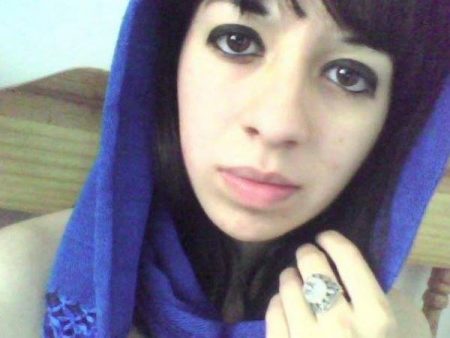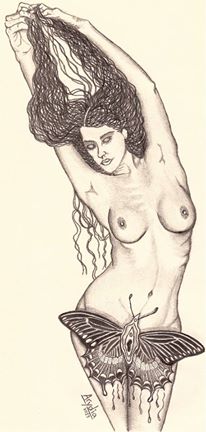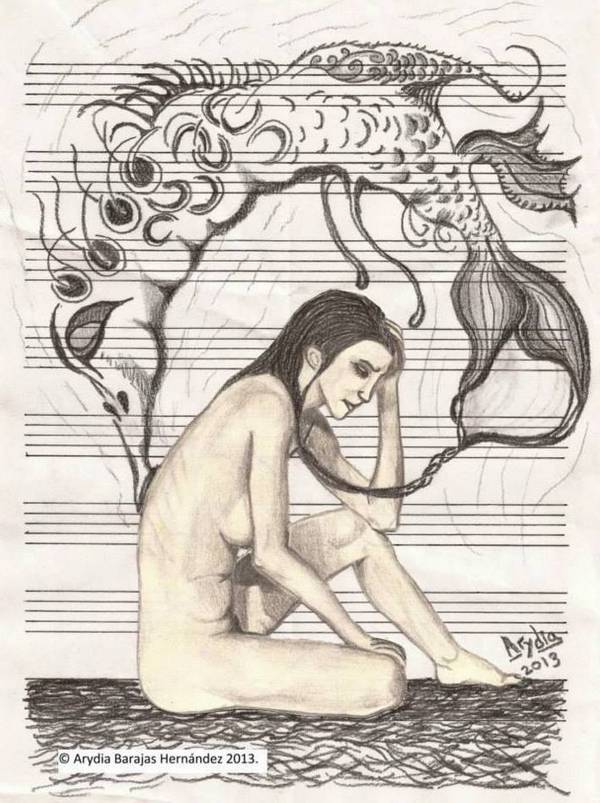Arydia Barajas: That which makes you think or feel intensively, is what really matters
“There are art pieces that have served as reference for thousands of texts. That, which makes you think or feel something intensively, is what really matters”. A Dante Vázquez Maldonado’s interview for #ElcostaldelSeñor/ Translation: Arturo Rojas Rojas (@ArturoRRojas)
 Who is Arydia? Who am I? For society at large I am Arydia Barajas. (…) For the way I absorb everything around me I am an extremely sensitive, intuitive, keen observer person. I am a perfectionist, which helps me a lot in my work, but I do not like it as much, because it turns me into a very complicated, over worried person.
Who is Arydia? Who am I? For society at large I am Arydia Barajas. (…) For the way I absorb everything around me I am an extremely sensitive, intuitive, keen observer person. I am a perfectionist, which helps me a lot in my work, but I do not like it as much, because it turns me into a very complicated, over worried person.
Something I have come to enjoy lately is being in my room, especially at night, listening to long plays that once belonged to my rocker family in my turntable. I also enjoy very much talking with my friends.
Tell us a little about your work, what inspires you? What is your artistic concept? What other lives would you like to touch? What techniques do you use? Above anything else, what inspires me the most is sea animals. I’m fascinated by bioluminescent and abyssal animals. Bugs and reptiles as well. There are also mythical and fantastic beings, monsters and demons from different cultures: fairies, sirens, satyrs, centaurs, Cthulhu… I’ve come to know them from stories anthologies, folk legends and myths, in dictionaries and specialized encyclopedias.
What I propose with my work as an illustrator is born from my notion of what drawing is. I think drawing has transcended until this day due to its functional character as basic tool of expression. My goal, as many other contemporary artists, is to experiment with all the possibilities it has to offer. I believe drawing as an art is more alive than ever before.
Regarding the techniques I use, so far pencil drawing is the one I apply the most, maybe because is the one I have more control over and furthermore, because I like shades of white, grey and black. Another material I cannot manage without when working with pencils are lithographic pens, since I like color and working small details. Only with lithographic pens I feel comfortable enough to use color.
In which projects have you participated? Almost three years ago I collaborated in a project that tried to define itself as a publishing consultancy. We created contents for some social media networks regarding the publishing scene. Afterwards, with this very same team, I worked on an illustration for a text book designed for children, that was when I “discovered” illustration (at least in didactic books) for children. Early in 2014 I worked on an illustration for the official promotional material of a music band called Los Velik. Recently I made an illustration and a body paint work for the cover and interiors of a poem anthology called La Sangre Apalabrada that gather poems from La Tinta del Silencio publishing house.
Right now, other two artists and I work on illustrations based on texts from writer Miguel Lupián.
How did you came across illustration and what did you like about it? My encounter with illustration happened when I was a little girl. When I was about 5 or 6 years old, I liked to flick through illustrated books for children. My grandfather, who worked as a graphic designer, gave me books illustrated by several artists who, to this day, remain some of my favorites. The thing with my grandfather was that he let me use his own material as I wished, even if I messed them up, since I didn’t know how to use them. After that, he taught me how to use them once I grew fond of them.
 At age 10 or 15, school subjects which, unintentionally, had the biggest impact and made me dedicate fully to illustration, was biology, especially biology lab. I remember the teacher brought us stagnant water samples from Chapultepec’s lake, or made us sneeze and spit on gelatin samples. We saw amoebas and other microorganisms eating one another, we saw cells on different reproduction stages, many tissue samples, among other things.
At age 10 or 15, school subjects which, unintentionally, had the biggest impact and made me dedicate fully to illustration, was biology, especially biology lab. I remember the teacher brought us stagnant water samples from Chapultepec’s lake, or made us sneeze and spit on gelatin samples. We saw amoebas and other microorganisms eating one another, we saw cells on different reproduction stages, many tissue samples, among other things.
Between the ages of 15 to 18, thanks to art and literature classes, I got myself to participate in an annual magazine published by my school, where students could send poems, stories and drawings. It was called Opio (Opium). By senior year I sent many drawings that were published on entire pages or accompanying poems from my classmates. All of them were published, which made me very proud.
What have you learned about life through illustration? That this is the path I want to follow and that it is going to be very difficult. I will only be able to travel it if I trust myself. I have learned that there are people who see everything as a competition, like a bucket full of crabs: just waiting to see who they can step on to reach higher.
There are also those who admire my work, even though I feel like I still have not reached the level I would like to. Truth is, not settling is what keeps me working and improving myself.
And what how have you learned about illustration through life? Things I can draw must allure me or make me feel a genuine interest. I can achieve my finest pieces when I like what I am about to draw. I have learned not to waste my time or efforts when people ask me for something I don’t feel attracted to; or that they will correct over and over again, because they lack the references or explanations needed.
In a world where utility factor or commercial value is preferred over aesthetic values, I know my work will be hard. Sometimes people do not even realize how laborious freehand drawing can be; they admire your work, but they do not want to pay its worth.
In what way has illustration changes, changed or will change your life? Illustration has helped me to know myself better, test myself. It has made me feel whole each time I finish a quality work. In that regard it has helped me realize what my path is, right when I understood there were opportunities for me to grow as an illustrator, which I didn’t know until recently. Regarding the other part, I hope this skill will open roads for me to meet new costums, persons and places, since I do not want to stay still in one place. I do not know what my future will be, but by keep moving forward and not quitting is how I will find out.
What for and why illustrate another life? I have to think ahead what I am going to do from the text or lyrics I am interpreting. Also, if possible, read or listen to the author. Because sometimes I find obvious connections in this “trans-artistic” translation, and sometimes, what I imagined from what I read or heard does not satisfy the creator of the other artistic expression. When that happens, I am amazed by how different my interpretation can be in comparison to what the other artist wants to communicate, that is when, for me, the work becomes more complex and interesting.
Every time someone reads a book, the person will look to complement it with visual material, which it is not always included in what they read or see. I think it is a mistake to believe that books for “grown-ups” does not need illustrations like in those published for kids. I remember I asked my grandfather once why did “fat books” had no drawings?, he said it was because adults does not need them anymore to imagine what they are reading; children, on the other hand, are like little sponges, they absorb any kind of material for their imagination. I do not believe it has to be that way. We grown-ups are probably overwhelmed with images, texts and sounds, but we have never been taught how to process and understand them. That is why I am so glad there are publishers that takes in account the importance of the visual aspect to complement their work and seek ways to transmit it, even when digital resources sometimes creates more problems than it solves. That is why I have to do some previous field work, to know the artists and be able to think more clearly what it is I need to draw.
Finally, give us some pointers on how to appreciate an illustration. No matter who you are, you will know a piece of art has value (not monetary), when you are satisfied, when it generate some kind of emotion in you, some feeling of intensity, even if you do not know how to describe it. That is, in my eyes, the kind of art that has worth. The same applies for illustrations.
If you do not feel anything that changes your mood completely, do not trust it to be art. If an illustration accompanying a story, a poem or a song, if it’s completely irrelevant to you, then it’s not a good illustration. There are art pieces that have served as reference for thousands of texts. That, which makes you think or feel something fiercely, is what is worth.~





Leave a Comment